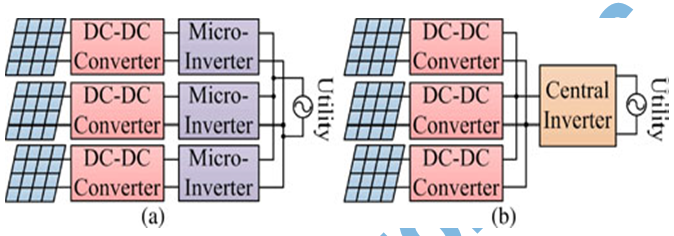Abstract:
This
paper investigates the enhancement of voltage stability using Static Synchronous
Series Compensator (SSSC). The continuous demand in electric power system
network has caused the system to be heavily loaded leading to voltage instability.
Under heavy loaded conditions there may be insufficient reactive power causing
the voltages to drop. This drop may lead to drops in voltage at various buses.
The result would be the occurrence of voltage collapse which leads to total blackout
of the whole system. Flexible AC transmission systems (FACTS) controllers have
been mainly used for solving various power system stability control problems.
In this study, a static synchronous series compensator (SSSC) is used to
investigate the effect of this device in controlling active and reactive powers
as well as damping power system oscillations in transient mode. The PI
controller is used to tune the circuit and to provide the zero signal error.
The dynamic performance of SSSC is presented by real time voltage and current
waveforms using MATLAB software for IEEE 4 bus system.
Keywords:
1. Static
Synchronous Series Compensator (SSSC),
2. Proportional-Integral
Controller
3. Real and Reactive Power Flow
4.
Voltage Stability
Software: MATLAB/SIMULINK
Block
Diagram:
Fig.1. Two Machine System Without SSSC
Conclusion:
It
has been found that the SSSC is capable of controlling the flow of power at a
desired point on the transmission line. It is also observed that the SSSC
injects a fast changing voltage in series with the line irrespective of the
magnitude and phase of the line current. Based on obtained simulation results
the performance of the SSSC has been examined in a multimachine system, and
applications of the SSSC will be extended in future to a complex system to
investigate the problems related to the various modes of power oscillation in the
power systems.
References:
[1 ]. M. Faridi, H. Maeiiat, M. Karimi, P.
Farhadi and H. Mosleh (2011) "Power System Stability Enhancement Using
Static Synchronous Series Compensator (SSSC)" IEEE Transactions on Power System,
pp. 387-391.
[2].
Kalyan K. Sen, (1998) "SSSC - Static Synchronous Series Compensator:
Theory, Modelling, and Applications", IEEE Transactions on Power Delivery,
Vol. 13, pp.241-246.
[3].
Sandeep Gupta, R. K. Tripathi (2010) "Voltage Stability Improvement in
Power Systems using Facts Controllers: State-of-the- Art Review". IEEE Transactions
on Power System, pp.I-8.
[4].
H. Taheri, S. Shahabi, Sh. Taheri and A. Gholami (2009) "Application of
Synchronous Static Series Compensator (SSSC) on Enhancement of Voltage Stability
and Power Oscillation Damping", IEEE Transactions on Power System, pp.
533-539.
[5].
Thieery Van Custem and Costas Vournas (1998), "Voltage stability of
electrical power systems", Kluwer academic publications.





